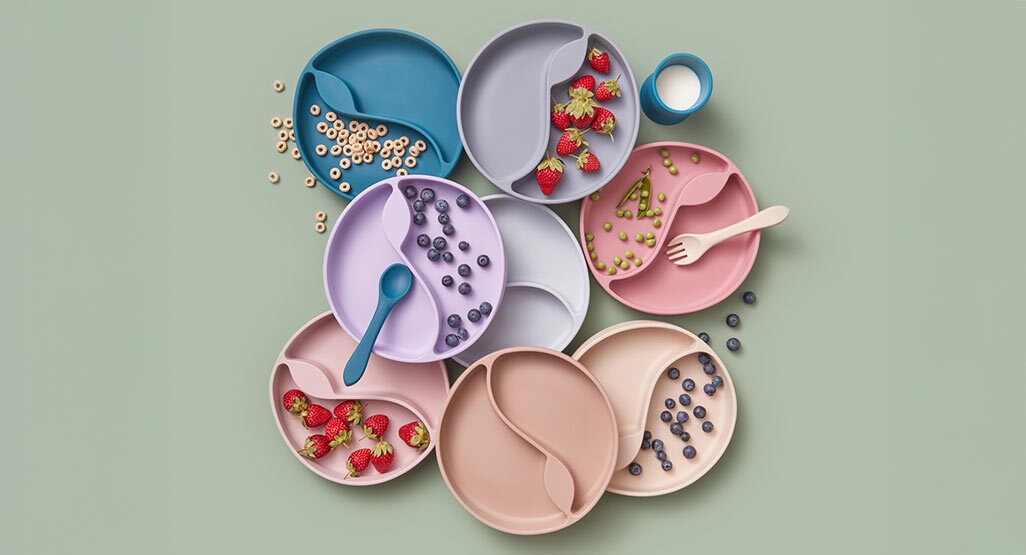Introducing your 6-month-old baby to solid foods is a significant milestone. As they transition from a diet solely of breast milk or formula, you might be wondering about the right amount of food to offer. It’s a common concern for parents: “Am I feeding my baby too much or too little?” Rest assured, you’re not alone in asking, “How Much Baby Food For 6 Month Old?”. This guide provides a helpful overview to navigate this exciting stage, ensuring your baby gets the nutrition they need while exploring new tastes and textures. Remember, every baby is unique, and these are general guidelines to support you.
Understanding Your 6-Month-Old’s Feeding Needs
At six months old, babies are typically ready to start exploring solid foods alongside breast milk or formula. The primary goal at this stage isn’t to replace milk feeds entirely but to introduce new flavors and textures and to teach your baby how to eat from a spoon. Breast milk or formula remains the primary source of nutrition for your baby during this time.
It’s important to look for signs of readiness before introducing solids. These signs generally appear around 6 months of age and include:
- Good head control: Your baby can hold their head steady and upright.
- Sitting up with support: They can sit in a high chair or supported seat.
- Interest in food: Your baby watches you eat, reaches for your food, and opens their mouth when offered a spoon.
- Loss of tongue-thrust reflex: They no longer automatically push food out of their mouth with their tongue.
- Bringing objects to mouth: They are increasingly interested in putting toys and hands in their mouth.
If your baby shows these signs, they are likely ready to begin their solid food journey. Consulting with your pediatrician is always a good step to confirm readiness and discuss any specific concerns.
What and How Much to Feed a 6-Month-Old
When starting solids at 6 months, the emphasis is on introducing a variety of flavors and textures, rather than focusing solely on the quantity of food consumed. Start with single-ingredient purees to identify any potential allergies and allow your baby to adjust to new tastes.
Recommended First Foods for 6-Month-Olds:
- Vegetables: Pureed cooked vegetables like sweet potato, butternut squash, carrots, peas, and green beans are excellent choices.
- Fruits: Pureed fruits such as apples, pears, bananas, peaches, and avocados offer natural sweetness and essential nutrients.
- Proteins: You can introduce pureed meats like chicken, beef, or pork. Legumes such as lentils and beans, well-cooked and pureed, are also good sources of protein and iron.
- Iron-Fortified Cereals: Opt for single-grain, iron-fortified baby cereals like oat or barley cereal mixed with breast milk or formula to a smooth consistency. Rice cereal is often suggested, but it’s good to vary grains.
- Dairy: A small amount of unsweetened, plain, full-fat yogurt can be introduced. Avoid cow’s milk as a drink until 12 months of age.
Feeding Amounts for a 6-Month-Old:
The following chart provides a general guideline for how much baby food for 6 month old babies is typically recommended. Remember, these are averages, and your baby may eat more or less on any given day. Always follow your baby’s cues of hunger and fullness.
| Food Group | Recommended Amount (6 Months) | Feeding Frequency (Solids) | Breast Milk or Formula |
|---|---|---|---|
| Iron-Fortified Cereal | 3-5 tablespoons (dry) | Once or twice a day | 28-32 ounces per day |
| Pureed Fruits | 1-4 tablespoons | Once or twice a day | |
| Pureed Vegetables | 1-4 tablespoons | Once or twice a day | |
| Pureed Protein | 1-4 tablespoons | Once or twice a day |


Important Considerations:
- Start Small: Begin with just 1-2 teaspoons of puree at one feeding per day. Gradually increase the amount and frequency as your baby gets used to solids.
- Listen to Your Baby’s Cues: Pay attention to your baby’s hunger and fullness signals. Turn away, close their mouth, or spit out food are signs they are full. Leaning forward, opening their mouth, and seeming excited about the spoon are signs they are still hungry.
- Consistency: Purees should be smooth and lump-free initially. As your baby gets more experienced, you can gradually thicken the consistency and introduce mashed or soft, well-cooked finger foods around 7-8 months.
- Variety is Key: Offer a wide range of flavors and textures to encourage acceptance of different foods and ensure a balanced intake of nutrients.
- Breast Milk or Formula First: Offer breast milk or formula before solids, especially in the beginning. Solids are complementary at this stage.
- Patience is Crucial: Introducing solids is a learning process for both you and your baby. Some babies take to solids quickly, while others may take more time. Be patient and persistent, and make mealtimes a positive and enjoyable experience.
Sample Feeding Schedule for a 6-Month-Old
While schedules can vary, here’s a sample feeding routine that incorporates solid foods for a 6-month-old:
- Morning: Breast milk or formula feed.
- Mid-morning: Small serving of solid food (e.g., 1-2 tablespoons of pureed fruit or vegetable) followed by breast milk or formula.
- Afternoon: Breast milk or formula feed.
- Late afternoon/Early evening: Small serving of solid food (e.g., 1-2 tablespoons of pureed vegetable or protein) followed by breast milk or formula.
- Evening: Breast milk or formula feed.
- Night feeds: Breast milk or formula on demand, as needed.
This is just a sample, and you can adjust it based on your baby’s individual needs and your family’s routine. The key is to offer solids at a time when your baby is alert and happy, and not overly tired or hungry.
Tips for Successful Feeding at 6 Months
- Make it a Routine: Choose a consistent time and place for feeding solids, such as when the family is eating.
- Create a Positive Environment: Mealtimes should be relaxed and enjoyable. Avoid pressure and stress.
- Use a Small Spoon: Use a soft-tipped spoon designed for babies.
- Offer Water: You can offer a few sips of water in a sippy cup with meals to help with hydration and get them used to drinking from a cup.
- Introduce One New Food at a Time: Wait 2-3 days before introducing a new food to monitor for any allergic reactions.
- Don’t Add Salt or Sugar: Baby food should be plain and naturally flavored. Avoid adding salt, sugar, or honey (honey should be avoided until after 1 year old).
Introducing solids at 6 months is an exciting adventure. By understanding how much baby food for 6 month old babies is generally recommended and paying attention to your baby’s cues, you can create a positive and healthy feeding experience. Remember to consult with your pediatrician for personalized advice and to address any specific concerns you may have about your baby’s nutrition and development. Enjoy this new stage of discovery with your little one!
Sources:
- Chandani DeZure, M.D., FAAP, pediatric hospitalist and member of the BabyCenter Medical Advisory Board
- Erin Hinga, M.S., registered dietitian and member of the BabyCenter Medical Advisory Board
- American Academy of Pediatrics (AAP) – https://www.healthychildren.org
- U.S. Department of Agriculture (USDA) – https://www.usda.gov
Alt text descriptions for images:
- Image 1 Alt: A mother lovingly spoons pureed baby food to her 6-month-old baby in a high chair, demonstrating the introduction of solid foods.
- Image 2 Alt: A smiling 6-month-old baby enthusiastically eats pureed baby food from a spoon, highlighting the joy of exploring new tastes and textures during feeding.
